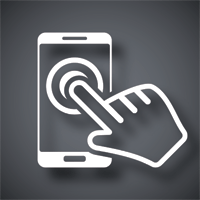Click versus Call: Google's Bid Adjustment Means Marketers Can Have Both

What do 77 percent of Americans own and half of its users say they can't live without? A smartphone.
Maybe this article's title gave that away, but the impacts of this trend are important nonetheless. Smartphone usage is firm at the center of consumers' lives, and reliance on these devices is only growing.
Despite historic resistance, the phone is popularizing as a marketing channel in the same way that it has in our personal lives. Particularly in light of mobile's rise as a useful tool at all stages of the buyer's journey (45 percent of shoppers already use phone for research, price comparison and purchase), marketers should be eagerly developing strategies to engage consumers via the channel.
Slow adoption of mobile marketing strategies is often related to issues of omnichannel attribution, but marketers are now seeing how calls can result in high-quality leads and more conversions. Conversations in marketing far too often center around the click and never the call, but recent Google ad bidding updates prove that the two aren't mutually exclusive.
When brands are given more control over the individual ads served, paid search can drive Web traffic and calls at the same time.
Convergence of Click and Call
At the center of these changes is, of course, Google - the company itself recognizing that calls convert three times better than Web clicks. Back in July 2017, Google acted upon this philosophy in announcing plans to offer call bid adjustments within AdWords to meet heightened user demand for call tracking. This update essentially lets advertisers pay a pay-per-click (PPC) premium on mobile click-to-call ads, meaning they can better control who is shown call extensions as a part of the larger AdWords experience.
Bid adjustments are not yet available to all AdWords users, but will ultimately allow participants to modify bids anywhere from -90 percent to +900 percent. The higher the increase, the greater the likelihood Google will show a call extension during a search.
Brands already making bid adjustments are seeing quick improvements. According to Google, one company has leveraged bid adjustments to increase call volume by 37 percent and decrease the average cost-per-call by 22 percent. Another brand has welcomed call bid adjustments to inspire a year-over-year increase in click-to-call rates of 79 percent.
Preparing for Phone Marketing
With results like these, it's a wonder more brands have yet to incorporate emerging call bid adjustment capabilities. This may be in part because some are still waiting for the update to become available; however, others are simply unprepared to leverage phone as a true marketing channel.
For those that fall into the latter group, there are a number of steps to take before achieving maximum ROI from phone and Google's bid adjustments. Top to-dos include:
- Localizing calls
Consumers are not reaching out from the same locations, and therefore may be more likely to contact a brand with a phone number similar to theirs. Marketers should match the call numbers served in ads to recipients at the city, state and even country level for international businesses.
- Differentiating channels
To learn which channels are encouraging the highest number of calls, marketers need unique tracking numbers assigned to campaigns run on each marketing channel. This solves persistent attribution problems, linking calls directly to the marketing efforts that drove them. Brands can even explore performance at the keyword level, which adds another layer of attribution transparency between PPC visitors and the searches that lead them to a business.
- Creating a destination for call information
Gathering insights does little without the ability to aggregate and store them. Considering the volume of calls brands receive daily, marketers require a repository in which they can both resolve individual queries and surface larger trends among the entire database.
Without foundational call tracking elements like these, it's difficult for marketers to responsibly adjust bids on Google with consistent results.
Fortunately, third-party call tracking solutions exist to manage these responsibilities (among a host of other capabilities) for businesses, making it easier than ever before to determine where advertising spends are at their most effective. At a time where marketers across all industries are struggling to improve ad spend transparency, call tracking can help agencies earn clients' trust with a commitment to better determining ROI.
Google first called attention to the value of the phone as a marketing channel when it introduced click-to-call ads. Now, almost a decade later, Google is again improving the viability of the phone as a marketing channel for today's brands. The question now is if brands are ready, or if the call for more diverse omnichannel marketing strategies are going straight to voicemail.
 About the Author
About the Author
Nancy Lim Rothman is celebrating her 10th year in marketing and advertising. During her career, she's served in leading marketing roles at automotive digital advertising solution PureCars and social media marketing software startup Vitrue, both of which underwent major acquisitions during her time there. Currently, Lim serves as the director of marketing at CallRail, a leading call tracking and analytics company based in Atlanta and trusted by more than 60,000 businesses in the U.S. and Canada.








